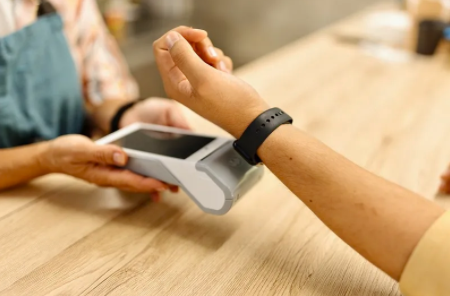In today’s digital world, Radio Frequency Identification (RFID) technology has become widely used in various scenarios, from retail to healthcare, logistics to entertainment. Among them, RFID wristbands, as a convenient tool for identification and tracking, are gaining increasing attention. However, with the vast array of RFID wristbands available on the market, choosing the right one for your needs can be confusing. This article will provide you with key factors and practical tips to help you make an informed decision.

What is an RFID Wristband?
An RFID wristband is a wearable device embedded with an RFID chip that can be used to identify and track the wearer. These wristbands are typically made of durable materials such as plastic or silicone to ensure comfort and durability. The RFID chip can store and transmit data, allowing the wristband to be used for various purposes, such as identification, payment, access control, and more.
RFID technology transmits data through radio waves without the need for direct contact. Depending on the operating frequency, RFID technology can be divided into three types: Low Frequency (LF, 125-134 KHz), High Frequency (HF, 13.56 MHz), and Ultra-High Frequency (UHF, 860-960 MHz). Each type of RFID technology has its own characteristics and suitable scenarios.
Why Choose an RFID Wristband?
RFID wristbands offer significant advantages in various scenarios:
- Non-contact Identification: Data can be read without direct contact, enhancing convenience and hygiene.
- Durability: Made from robust materials, RFID wristbands can withstand harsh environments and repeated use.
- Versatility: Suitable for a wide range of applications, including events, healthcare, and access control.
- Security: Advanced encryption and authentication features ensure data security and privacy.
Key Factors to Consider When Choosing an RFID Wristband
1. Frequency
The frequency of the RFID chip is a crucial factor. LF RFID wristbands are suitable for short-range applications, while HF and UHF wristbands offer longer read ranges. For example, HF RFID wristbands are commonly used in access control systems, whereas UHF RFID wristbands are ideal for large-scale events where long-range scanning is necessary.
2. Material
The material of the wristband affects its durability and comfort. Silicone wristbands are popular for their flexibility and water resistance, making them suitable for sports and outdoor events. Plastic wristbands, on the other hand, are more rigid and can be printed with detailed graphics, making them ideal for promotional purposes.
3. Read Range
The read range of the RFID chip determines how far the wristband can be scanned. For instance, a wristband with a read range of 1 meter might be sufficient for a small event, but a longer read range of 5 meters or more might be necessary for a large festival or concert.
4. Data Capacity
Consider the amount of data you need to store on the RFID chip. Some wristbands can store only a small amount of data, while others can hold more extensive information. For example, if you need to store detailed customer information, you might opt for a wristband with higher data capacity.
5. Security Features
Security is paramount, especially in sensitive applications like healthcare or financial transactions. Look for wristbands with advanced encryption and authentication features to protect data integrity and privacy.
Practical Tips for Choosing the Right RFID Wristband
1.Assess Your Needs
Determine the primary use of the RFID wristband. Are you using it for event management, access control, or healthcare identification? This will help you narrow down your options.
2.Check Compatibility
Ensure that the RFID wristband is compatible with your existing systems and readers. Compatibility issues can lead to operational inefficiencies.
3.Consider the Environment
If the wristband will be used in harsh conditions, such as outdoor events or industrial settings, choose a material that can withstand moisture, dust, and physical wear.
4.Test Before Purchase
If possible, test the wristband in a real-world scenario to ensure it meets your requirements. This can help you avoid potential issues down the line.
Conclusion
Choosing the right RFID wristband involves considering various factors such as frequency, material, read range, data capacity, and security features. By assessing your needs and following practical tips, you can select a wristband that meets your requirements and enhances your operations.
For more information and to explore a wide range of high-quality RFID wristbands, contact Leadercolor today. We are committed to providing innovative and reliable RFID solutions tailored to your needs. Visit our website or call us to learn more!
Youtube: @Leadercolor
Linkedin: @Leadercolor
Tel: +86-755-89379391
E-mail: [email protected]
Our website: www.leadercolor.com

